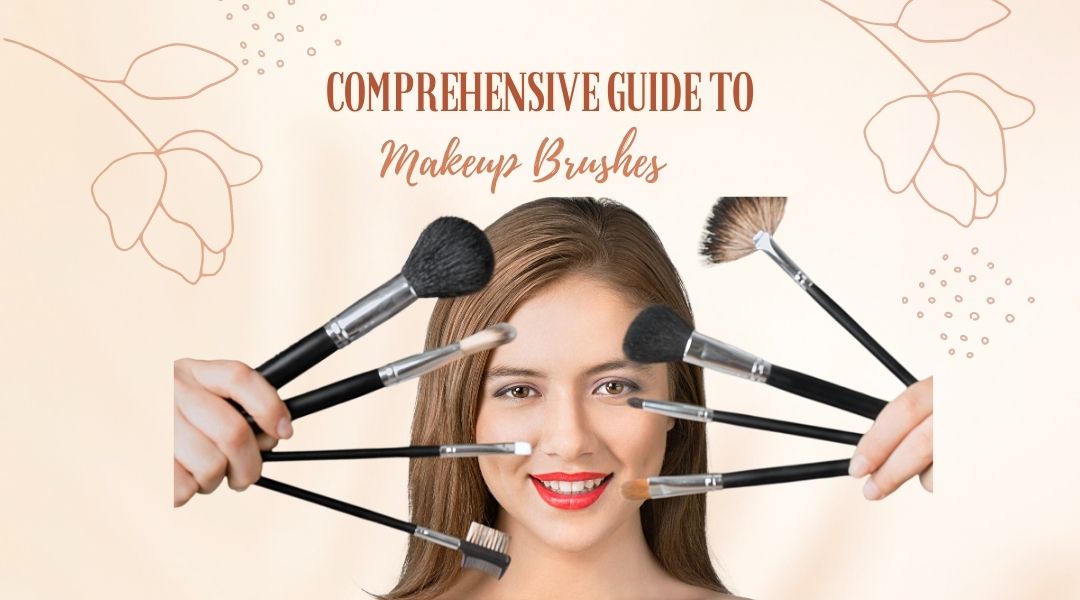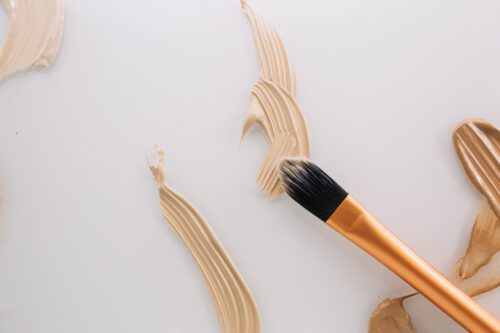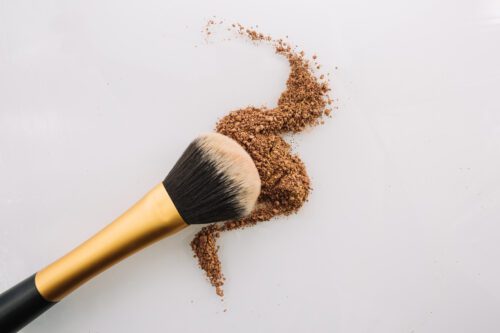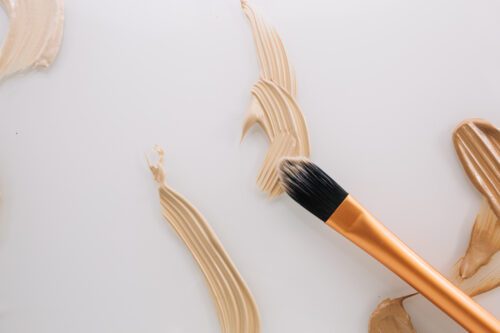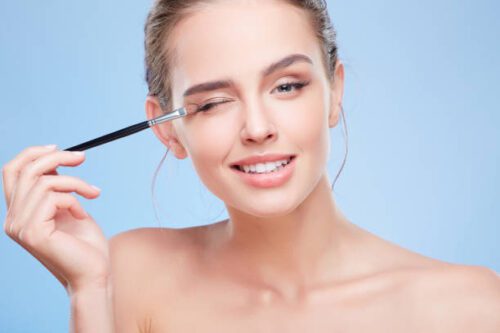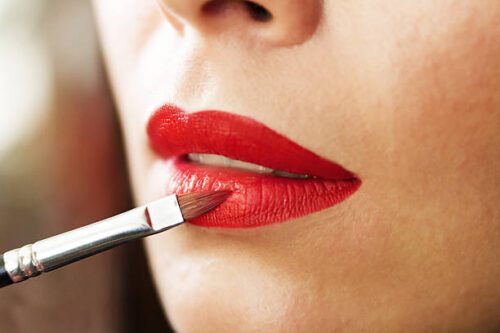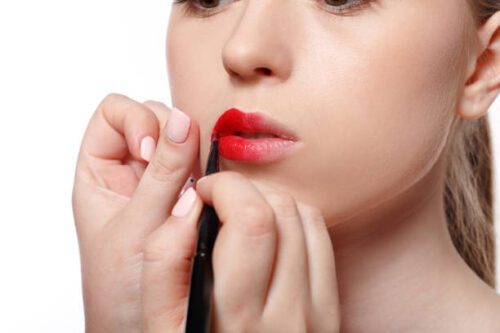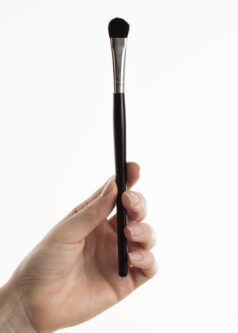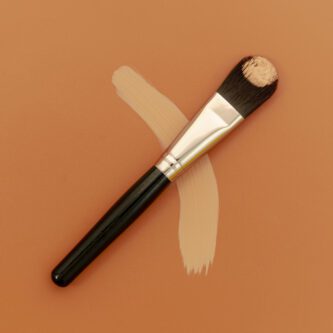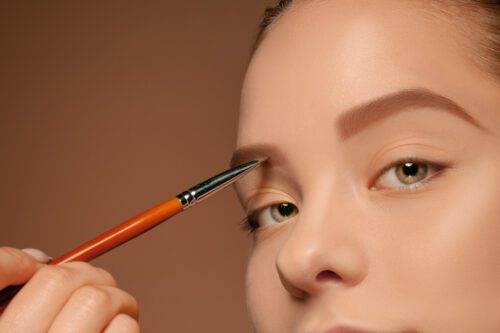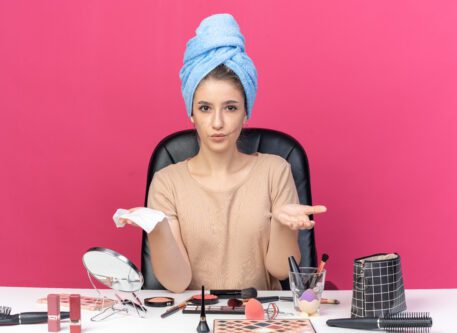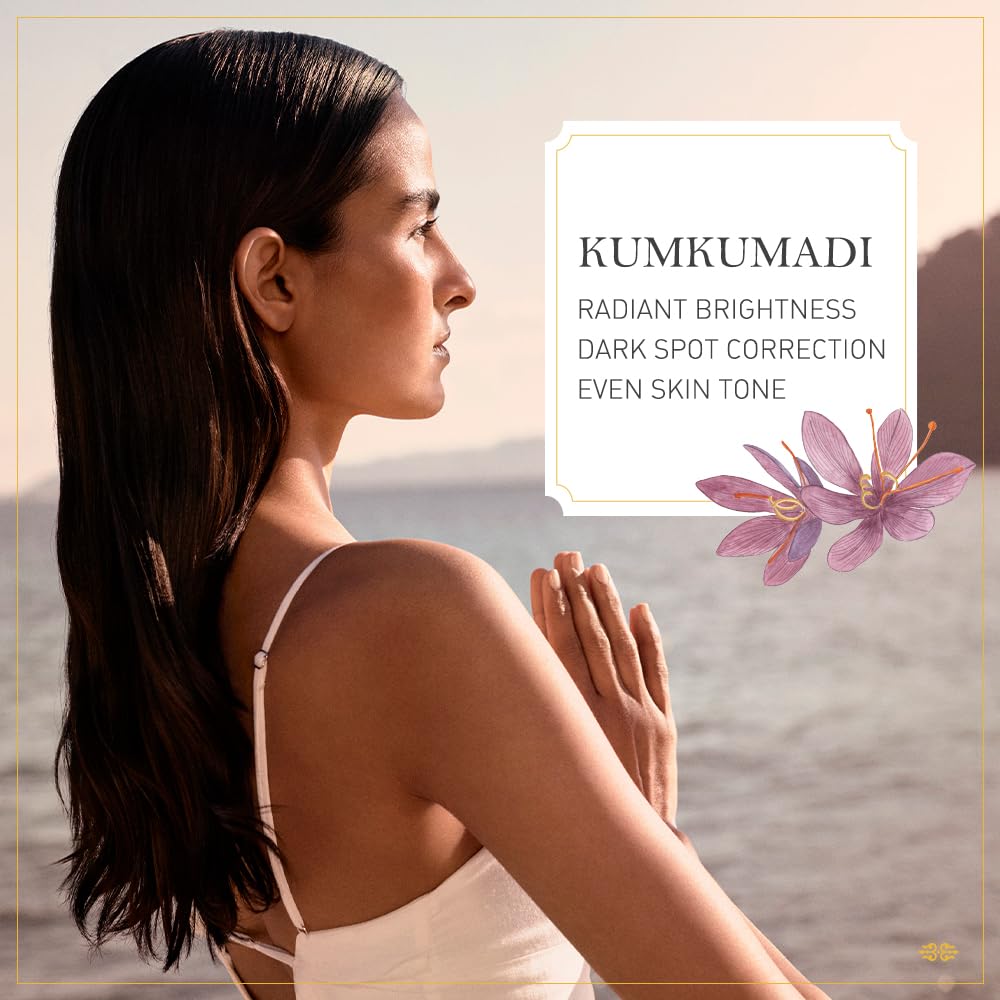Comprehensive Guide to Makeup Brushes Makeup brushes are essential tools for achieving flawless makeup application. There are numerous types of brushes available, each designed for specific purposes. Here’s a breakdown of different types of makeup brushes, their applications, some application tips, brushes to avoid, and recommendations for the best ones to buy:
Are makeup brushes even important?
Yes, makeup brushes are indeed important tools for achieving professional and flawless makeup application. While it is possible to apply makeup with your fingers or sponge applicators, brushes offer several advantages:
- Precision: Makeup brushes allow for precise application, enabling you to have better control over product placement and blending. This is especially crucial when it comes to detailed tasks like creating sharp lines, contouring, or achieving intricate eyeshadow looks.
- Seamless Blending: Brushes are designed with various shapes, densities, and bristle types, making them effective for blending different products like foundation, blush, and eyeshadow. They help create a seamless, natural finish by ensuring smooth transitions between colours and products.
- Hygiene: Using brushes helps maintain good hygiene by reducing the direct contact of your hands with your face and makeup products. This minimizes the transfer of oils, bacteria, and dirt onto your skin, promoting a cleaner and healthier makeup application process.
- Versatility: Makeup brushes offer versatility in terms of the range of products they can be used with. From liquid foundations to powders, creams, and even gel or powder eyeliner, a brush is designed for each product type, allowing for optimal application.
- Product Conservation: High-quality makeup brushes often can pick up and distribute products more efficiently, ensuring that you use just the right amount of product needed for each application. This can help you extend the lifespan of your makeup products and reduce wastage.
- Professional Finish: Makeup brushes, when used skillfully, can help achieve a professional and polished makeup look. They aid in creating a more even, blended, and controlled application, resulting in a refined appearance that mimics the work of professional makeup artists.
While makeup brushes are beneficial, it’s important to note that their effectiveness also depends on their quality, maintenance, and proper technique. Investing in high-quality brushes, cleaning them regularly, and practising proper application techniques will maximize their benefits and ensure optimal results.
Types of commonly used makeup brushes-
Here are some commonly used makeup brushes and their primary purposes:
1. Foundation Brush:-
Used for applying liquid or cream foundation. Opt for a dense, flat brush or a stippling brush for a seamless finish. Avoid using a fluffy brush for foundation application, as it may leave streaks.
Recommended: Sigma F80 Flat Kabuki Brush, Real Techniques Expert Face Brush.
2. Concealer Brush:-
Designed for precise application of concealer on blemishes, dark circles, or imperfections. Look for a small, synthetic brush with a pointed tip for better control and blending.
Recommended: MAC 195 Concealer Brush, Morphe M224 Oval Camouflage Brush.
3. Powder Brush:-
Ideal for applying loose or pressed powder to set the foundation and reduce shine. Choose a fluffy, large brush for a light, even application.
Recommended: IT Cosmetics Heavenly Luxe Jumbo Powder Brush, Real Techniques Powder Brush.
4. Blush Brush:-
Used to apply blush or bronzer to the cheeks. Select a medium-sized brush with soft bristles for seamless blending.
Recommended: NARS Yachiyo Kabuki Brush, EcoTools Precision Blush Brush.
5. Contour Brush:-
Designed for sculpting and defining facial features. Look for a small, angled brush with dense bristles for precise application and blending.
Recommended: Anastasia Beverly Hills A30 Pro Brush, Morphe M528 Deluxe Pointed Contour Brush.
6. Eyeshadow Brush:-
Used to apply eyeshadow to the eyelids. Opt for a variety of brushes, including a flat shader brush, a fluffy blending brush, and a precise crease brush for different eyeshadow application techniques.
Recommended: MAC 239 Eye Shader Brush, Morphe M441 Pro Firm Blending Crease Brush.
7. Eyeliner Brush:-
Used for applying eyeliner, whether gel, cream, or powder. Choose a thin, angled brush for creating precise lines.
Recommended: Sigma E65 Small Angle Brush, Zoeva 317 Wing Liner Brush.
8. Lip Brush:-
Ideal for precise lipstick or lip gloss application. Look for a small, tapered brush with firm bristles for better control.
Recommended: NYX Pro Dual Fiber Lip Brush, MAC 316 Lip Brush.
Must-have makeup brushes and tips to use them correctly
Here are some must-have makeup brushes and tips for using them correctly:
Foundation Brush: A flat or stippling brush is ideal for applying liquid or cream foundation. Start by applying small dots of foundation on your face and use the brush to blend it out in gentle, circular motions for a seamless finish.
Concealer Brush: Use a small, synthetic brush with a pointed tip to apply concealer on blemishes or under-eye circles. Dab the concealer onto the targeted area and gently blend it using patting or light sweeping motions.
Powder Brush: A large, fluffy brush is perfect for applying loose or pressed powder to set your foundation. Lightly swirl the brush in the powder and tap off any excess before gently sweeping it over your face for an even application.
Blush Brush: Choose a medium-sized, fluffy brush for applying blush or bronzer to the cheeks. Smile and apply the product on the apples of your cheeks, then blend it out towards your temples using soft, circular motions.
Eyeshadow Brush: Invest in a variety of eyeshadow brushes, including a flat shader brush for applying colour all over the lid, a fluffy blending brush for seamless blending, and a precise crease brush for defining the crease. Use the flat shader brush to pack colour onto the lid, the blending brush for blending and diffusing edges, and the crease brush for adding depth to the crease area.
Eyeliner Brush: A thin, angled brush is great for applying eyeliner, whether it’s gel, cream, or powder. Dip the brush into the product and draw a precise line along your lash line, gradually building up the intensity as desired.
Brow Brush: Use a small, angled brush with firm bristles to fill in and shape your eyebrows with brow powder or pomade. Start by lightly filling in any sparse areas with short, feathery strokes, then use the brush to blend and groom the hairs.
Lip Brush: For precise lipstick or lip gloss application, use a small, tapered lip brush. Dip the brush into the product and apply it to your lips, starting from the centre and moving towards the corners. Use the brush to define the edges for a clean finish.
Tips for Using Makeup Brushes:-
- Clean your brushes regularly to remove product buildup and maintain their performance.
- Use gentle, light-handed motions when applying makeup with brushes to achieve a natural and blended look.
- When using eyeshadow brushes, tap off excess product before applying to minimize fallout and ensure controlled application.
- Experiment with different brush techniques, such as stippling, buffing, or swirling, to achieve different effects and finishes.
- Invest in high-quality brushes that are soft, durable, and suitable for your specific needs. Good brushes can make a significant difference in your makeup application.
- Remember, practice makes perfect when it comes to using makeup brushes. Experiment with different brushes and techniques to find what works best for you and enhances your makeup application skills.
Makeup brushes that are not necessary and their substitutes -:
While the following brushes are commonly used, they may not be considered necessary for everyone. Here are some alternatives or substitutes for brushes that you may choose to omit from your makeup brush collection:
1. Fan Brush:
A fan brush is typically used for a light dusting of powder, highlighter, or bronzer. An alternative could be using a fluffy blush brush or a small powder brush to achieve a similar effect.
2. Lip Brush:
While a lip brush can provide precise application, you can directly apply lipstick or lip gloss from the bullet or use a doe-foot applicator that comes with many liquid lip products.
3. Specific Eyeshadow Brushes:
While having a range of eyeshadow brushes is beneficial for precise application, you can achieve similar results with a versatile, medium-sized eyeshadow brush. It can be used for both lid application and blending in the crease.
4. Contour Brush:
Instead of a specific contour brush, you can use a small, angled blush brush or a fluffy powder brush to contour and sculpt the face. The key is to select a brush with the right shape and size for your desired application technique.
5. Eyebrow Brush:
Rather than a separate eyebrow brush, many eyebrow products come with a built-in spoolie brush that can be used to groom and shape your brows.
Remember, the need for specific brushes depends on personal preferences, desired makeup looks, and individual application techniques. If you find that certain brushes are unnecessary for your routine or you can achieve the same results with alternative tools, feel free to omit them from your collection. Focus on having brushes that suit your preferred makeup style and application needs.
How to choose the right makeup brush-:
Choosing the right makeup brush involves considering factors such as brush type, bristle material, shape, size, and quality. Here are some tips to help you choose the right makeup brush:
Determine Your Needs: Consider the types of makeup products you regularly use and the specific application techniques you prefer. This will help you identify the essential brushes you need in your collection.
Brush Type: Understand the purpose of each brush type and its intended use. For example, foundation brushes are designed for liquid or cream products, while eyeshadow brushes are meant for applying and blending eyeshadow. Choose brushes that align with your makeup routine.
Bristle Material: Synthetic bristles are suitable for liquid and cream products, as they don’t absorb as much product and are easier to clean. Natural hair bristles, like those made from goat or squirrel hair, work well for powder products as they provide better blending and pickup.
Shape and Size: Consider the shape and size of the brush head based on your desired application technique and the area you’ll be working on. For example, a smaller, angled brush is great for precise application, while a larger, fluffy brush is ideal for diffusing and blending.
Quality: Invest in high-quality brushes that are durable, have well-constructed handles, and feature secure ferrules (the metal part that holds the bristles). Quality brushes tend to perform better, last longer, and provide a more seamless application.
Reviews and Recommendations: Read reviews, watch tutorials, and seek recommendations from trusted sources or beauty professionals to gain insights into popular and reliable brush brands and specific brush models.
Try Before Buying: If possible, visit a makeup store or counter and test brushes by feeling the bristles and assessing their density, softness, and flexibility. This allows you to gauge the brush’s quality and determine if it suits your preferences.
Budget Considerations: Set a budget for your brush collection and look for brushes that offer the best value within your price range. Remember that while quality brushes may be pricier, they often provide better performance and durability.
Personal Preference: Ultimately, personal preference plays a role in selecting the right brushes. Consider factors such as handle length, weight, and design that make the brush comfortable and enjoyable for you to use.
By considering these factors and experimenting with different brushes, you can find the ones that suit your makeup routine, preferences, and budget, ultimately enhancing your application skills and achieving the desired results.
Why should you clean your makeup brushes and how?
Cleaning your makeup brushes is essential for several reasons:
Hygiene: Regularly cleaning your makeup brushes helps remove built-up bacteria, dirt, oils, and old makeup residue from the bristles. This helps prevent the transfer of bacteria to your skin, reducing the risk of breakouts, infections, and other skin issues.
Better Makeup Application: Clean brushes provide a more effective and seamless makeup application. Brushes that are clogged with the product can result in patchy or uneven application, whereas clean brushes allow for smooth and even product distribution.
Maintaining Brush Performance: Over time, makeup residue can accumulate in the bristles, causing them to become stiff, matted, or misshapen. Regular cleaning helps maintain the softness, shape, and performance of your brushes, ensuring they last longer.
To clean your makeup brushes effectively, follow these general steps:
Wet the Bristles: Rinse the bristles under lukewarm water, pointing them downwards to prevent water from running into the handle or ferrule, which can loosen the glue and damage the brush.
Cleanse with Gentle Soap or Brush Cleanser: Apply a small amount of mild shampoo, gentle soap, or specifically formulated brush cleanser onto your palm or a cleaning surface. Gently swirl the brush bristles in the cleanser, ensuring that the soap reaches the base of the bristles.
Rinse Thoroughly: Rinse the brush under running water until the water runs clear and no soap residue remains. Be careful not to submerge the entire brush in water, as it can weaken the glue that holds the bristles.
Squeeze Out Excess Water: Gently squeeze out any excess water from the bristles using a clean towel or your fingers. Avoid pulling or twisting the bristles, as it can damage the brush.
Reshape and Dry: Reshape the bristles to their original form using your fingers. Lay the brushes flat on a clean towel or hang them upside down with the bristles facing down to air dry. This helps prevent water from accumulating in the ferrule, which can cause bristle damage or loosen the glue.
Repeat as Necessary: If your brushes are heavily soiled or have stubborn residue, you may need to repeat the cleaning process.
The frequency of cleaning depends on the frequency of use and the types of products you use. As a general guideline, it is recommended to clean your brushes at least once a month, or more frequently if you use them daily or with cream-based products.
By incorporating regular cleaning into your beauty routine, you can ensure the cleanliness, performance, and longevity of your makeup brushes and promote healthier skin.
Top makeup brushes to buy for a flawless application -:
Here are some top makeup brushes that are highly regarded for their quality and performance, helping you achieve a flawless application:
Real Techniques Expert Face Brush: This dense, synthetic bristle brush is perfect for applying and blending liquid or cream foundation. It provides a seamless and airbrushed finish.
Sigma Beauty F80 Flat Kabuki Brush: Known for its soft, dense bristles, this brush is great for applying and buffing liquid or cream products. It works particularly well for foundation and provides high coverage and flawless finish.
Morphe M439 Deluxe Buffer Brush: This large, rounded brush is excellent for buffing and blending liquid or powder foundation. Its synthetic bristles ensure a smooth and streak-free application.
MAC 217 Blending Brush: A cult favourite, this versatile brush is perfect for blending and diffusing eyeshadow in the crease. It’s made of soft, natural bristles and helps create seamless transitions between colours.
Zoeva 228 Luxe Crease Brush: This tapered, fluffy brush is ideal for precise blending in the crease area. It allows for the effortless and controlled application of eyeshadow, making it a favourite among makeup enthusiasts.
Anastasia Beverly Hills A23 Pro Brush: This densely packed, angled brush is specifically designed for precise contouring and highlighting. It provides excellent control and allows for seamless blending.
IT Cosmetics Heavenly Luxe Complexion Perfection Brush
This dual-ended brush features a large, fluffy brush on one end for powder application and a smaller, tapered brush on the other for targeted contouring or blush application. It’s versatile and provides a flawless complexion.
Hakuhodo J5523 Eyeshadow Brush: Hakuhodo is known for its exceptional quality brushes, and the J5523 is a popular choice for the eyeshadow application. Its soft bristles and precise shape allow for precise colour placement and blending.
This unique brush is designed to provide an airbrushed finish to your makeup. The soft, synthetic bristles help blend products seamlessly, resulting in a flawless complexion.
This iconic kabuki brush is loved for its versatility. It can be used for applying blush, bronzer, or powder, providing a soft and natural finish. Its unique shape and natural bristles make it a standout in any brush collection.
Remember, the best brushes for you may vary based on personal preference, budget, and the specific makeup looks you aim to achieve. It’s always beneficial to try out different brushes and brands to find the ones that suit your needs and deliver the desired results.

